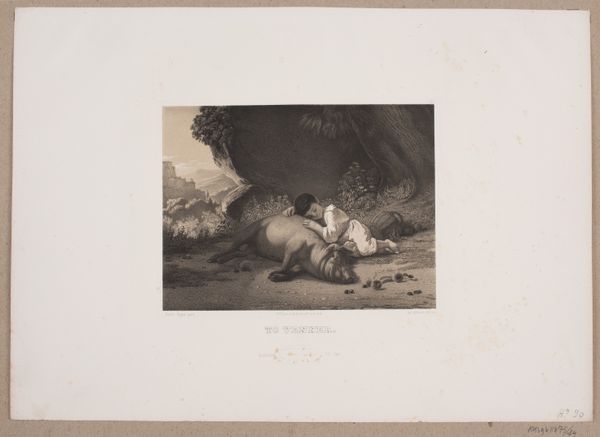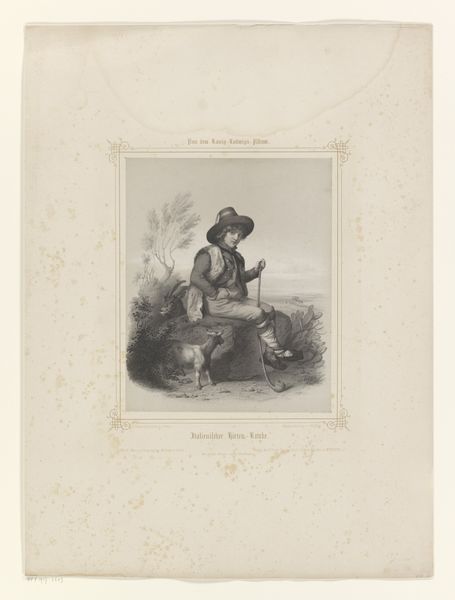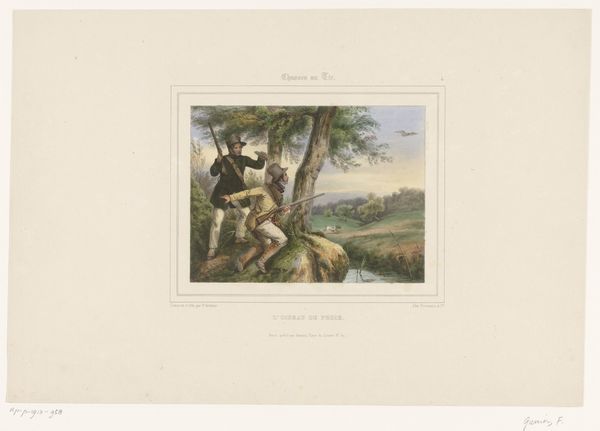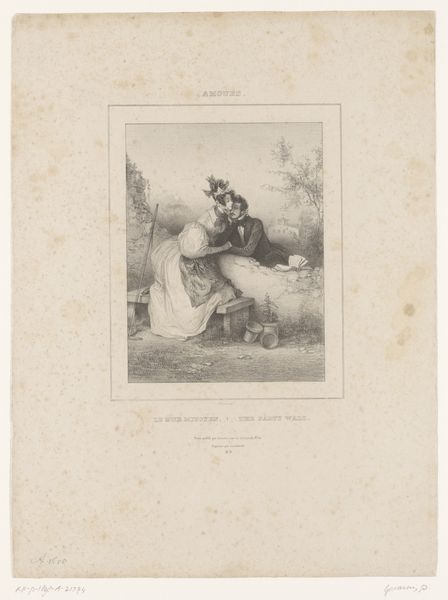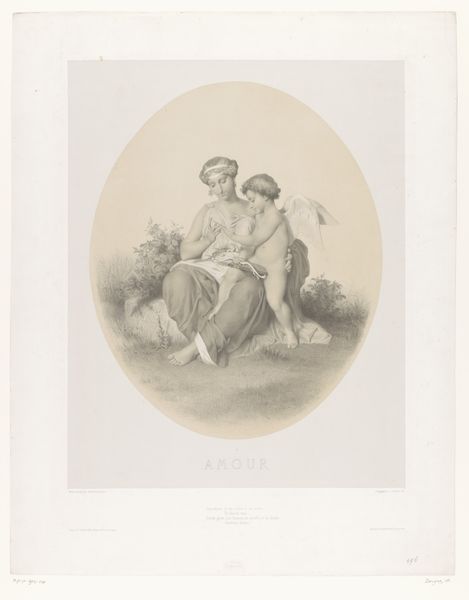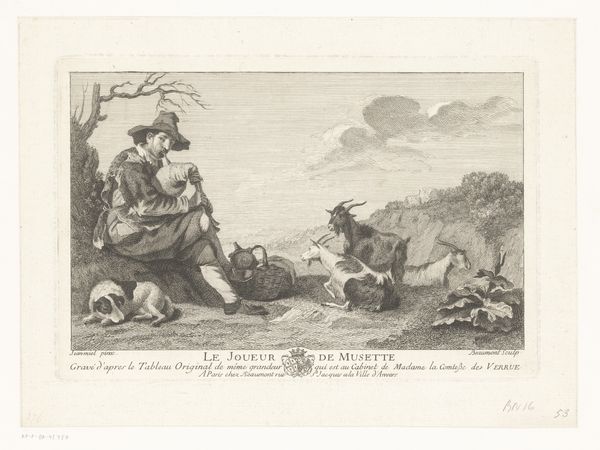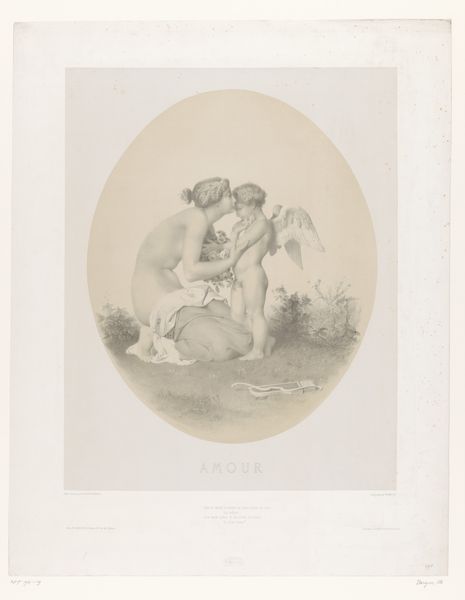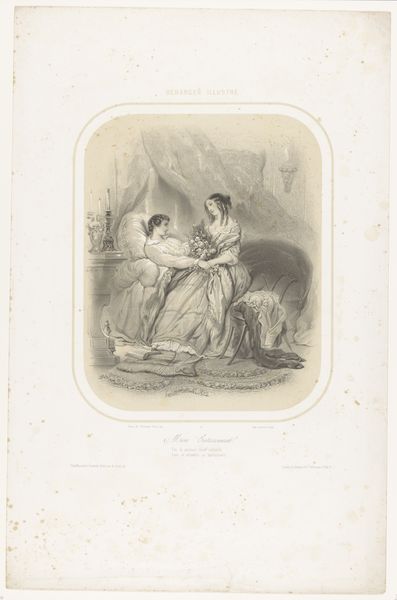
drawing, pencil
#
drawing
#
landscape
#
pencil drawing
#
romanticism
#
pencil
#
genre-painting
Dimensions: height 314 mm, width 492 mm
Copyright: Rijks Museum: Open Domain
Curator: Here we have "Herder met meisje bij een poel," or "Shepherd with Girl at a Pool" by Bernard Romain Julien, made between 1844 and 1854. It's currently housed here at the Rijksmuseum. Editor: It has such a peaceful quality. They look so at ease, almost dreamy, against this rather idealized backdrop. I immediately think about idealized masculinity, and power dynamics at play in pastoral scenes. Curator: Absolutely. This work exemplifies Romanticism's embrace of the rural and idealized past. Examining Julien's artistic practice, one can understand how his art provided an important context to socio-political conditions of the period. Romanticism offered an escape from the increasing industrialization of Europe. The elite class were able to purchase idyllic representations of simpler times and landscapes devoid of contemporary issues. Editor: So it’s not just about aesthetic appeal, but also a projection of class and power onto the canvas? This constructed innocence obscures the labor, exploitation, and realities of rural life during this era. And the representation of the figures… do we see echoes of, perhaps, orientalist tropes? A certain passivity ascribed to the female figure juxtaposed with the reclining male? Curator: These are essential observations. The Romantic period frequently used this aesthetic approach for disseminating political ideology that upheld white male patriarchal rule in Europe. Editor: Thinking about gender then, does Julien subtly reinforce conventional roles by portraying the shepherd boy as watchful while the girl seemingly rests, leaning against her sheep? Is this an aesthetic of subservience? What are we actually supposed to 'see' when we consider images like these? Curator: Your reading hits upon key anxieties that underpin idealized images of rural society, and also suggests future themes in later artwork movements that pushed for social equality and against harmful forms of art production. Editor: Thank you. Thinking about these kinds of historical art through this lens feels more appropriate. Curator: It gives us much needed context.
Comments
No comments
Be the first to comment and join the conversation on the ultimate creative platform.

